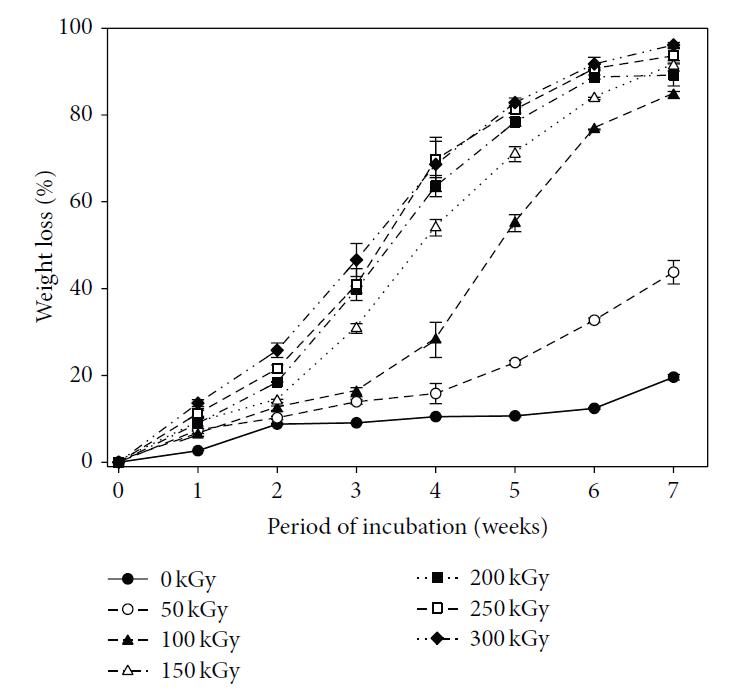▼ Reference
- Choi J S, Lee S W, Jeong L, Bae S H, Min B C, Youk J H, Park W H. Effect of organosoluble salts on the nanofibrous structure of electrospun poly(3-hydroxybutyrate-co-3-hydroxyvalerate). International Journal of Biological Macromolecules 2004; 34: 249.
- Dong Y X, Yong T, Liao S, Chan C K, Ramakrishna S. Degradation of Electrospun Nanofiber Scaffold by Short Wave Length Ultraviolet Radiation Treatment and Its Potential Applications in Tissue Engineering. Tissue Engineering Part A 2008; 14: 1321.
- Gaharwar A K, Mukundan S, Karaca E, Dolatshahi-Pirouz A, Patel A, Rangarajan K, Mihaila S M, Iviglia G, Zhang H B, Khademhosseini A. Nanoclay-Enriched Poly(ε-caprolactone) Electrospun Scaffolds for Osteogenic Differentiation of Human Mesenchymal Stem Cells. Tissue Engineering: Part A 2014; 19: 1.
- Kim K, Yu M, Zong X, Chiu J, Fang D, Seo Y S, Hsiao B S, Chu B, Hadjiargyrou M. Control of degradation rate and hydrophilicity in electrospun non-woven poly(d,l-lactide) nanofiber scaffolds for biomedical applications. Biomaterials 2003; 24: 4977.
- Lee J B, Ko Y Q, Cho D, Park W H, Kim B N, Lee B C, Kang I K, Kwon O H. Modification of PLGA Nanofibrous Mats by Electron Beam Irradiation for Soft Tissue Regeneration. Journal of Nanomaterials 2015; 2015: 295807 Open Access
- Liu Y J, Jiang H L, Li Y, Zhu K J. Control of dimensional stability and degradation rate in electrospun composite scaffolds composed of poly(D,L-lactide-co-glycolide) and poly(ε-caprolactone). Chinese Journal of Polymer Science 2008; 26: 63.
- Mansourizadeh F, Miri V, Shahabi F, Mansourizadeh F, Pasban E, Asadi A. In vitro degradation of electrospinning PLLA/HA nanofiber scaffolds compared with pure PLLA. International Journal of Plant, Animal and Environmental Sciences 2014; 4: 330. Open Access
- Natu MV, de Sousa HC, Gil MH, Influence of polymer processing technique on long term degradation of poly(ε-caprolactone) constructs, Polymer Degradation and Stability 2013; 98: 44.
- Niu X, Liu Z, Tian F, Chen S, Lei L, Jiang T, Feng Q, Fan Y. Sustained delivery of calcium and orthophosphate ions from amorphous calcium phosphate and poly(L-lactic acid)-based electrospinning nanofibrous scaffold. Scientific Reports 2017; 7: 45655. Open Access
- Shang S, Yang F, Cheng X, Walboomers X F, Jansen J A. The effect of electrospun fibre alignment on the behaviour of rat periodontal ligaments cells. European Cells and Materials 2010; 19: 180. Open Access
- Shen J, Yuan W, Badv M, Moshaverinia A, Weiss P S. Modified Poly(ε-caprolactone) with Tunable Degradability and Improved Biofunctionality for Regenerative Medicine. ACS Mater. Au 2023; 3: 540. Open Access
- Spagnuolo M and Liu L. Fabrication and Degradation of Electrospun Scaffolds from L-Tyrosine-Based Polyurethane Blends for Tissue Engineering Applications. ISRN Nanotechnology 2012; 2012: 627420. Open Access
- Thao NTT, Lee S, Shin GR, Kang Y, Choi S, Kim MS. Preparation of Electrospun Small Intestinal Submucosa/Poly(caprolactone-co-Lactide-co-glycolide) Nanofiber Sheet as a Potential Drug Carrier. Pharmaceutics. 2021;13(2):253. Open Access
- Xu X, Chen X, Liu A, Hong Z, Jing X. Electrospun poly(L-lactide)-grafted hydroxyapatite/poly(L-lactide) nanocomposite fibers. European Polymer Journal 2007; 43: 3187.
- Zhang K, Yin A, Huang C, Wang C, Mo X, Al-Deyab S S, El-Newehy M. Degradation of electrospun SF/P(LLA-CL) blended nanofibrous scaffolds in vitro. Polymer Degradation and Stability 2011; 96: 2266.
- Zhang Y, Jian Y, Jiang X, Li X, Wu X, Zhong J, Jia X, Li Q, Wang X, Zhao K, Yao Y. Stepwise degradable PGA-SF core-shell electrospinning scaffold with superior tenacity in wetting regime for promoting bone regeneration. Materials Today Bio 2024; 26: 101023. Open Access
- Zhao M L, Sui G, Deng X L, Lu J G, Ryu S K, Yang X P. PLLA/HA Electrospin Hybrid Nanofiber Scaffolds: Morphology, In Vitro Degradation and Cell Culture Potential. Advanced Materials Research 2006; 11-12: 243.
▼ Credit and Acknowledgement
Author
Wee-Eong TEO View profile
Email: weeeong@yahoo.com
 ElectrospinTech
ElectrospinTech
